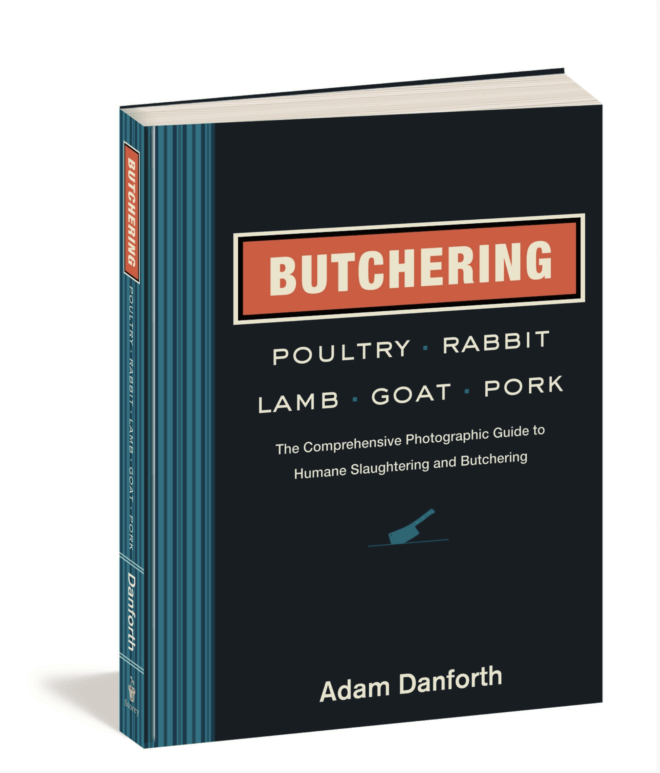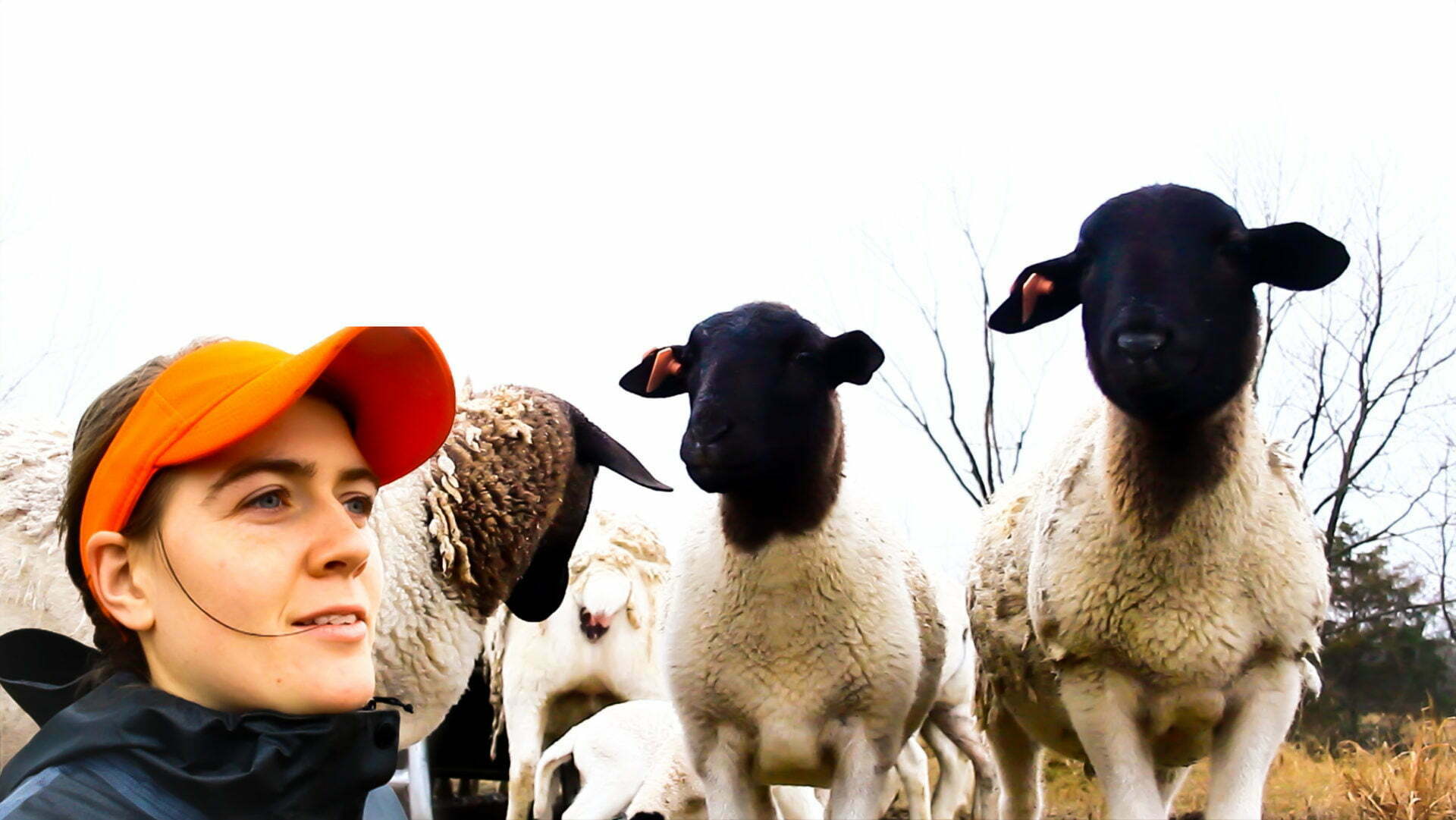Butchering a Sheep at Home (using Bearded Butcher Knives)
In this blog post, I’ll walk you through the process of butchering a sheep using only a knife and paracord. This guide is based on my first time experience and aims to provide useful insights for those who may find themselves in a similar situation.
Introduction
The first time I butchered a sheep was quite the learning experience. By the end of the winter, I had butchered four or five lambs and was surprised at how much my efficiency improved. Initially, my supplies were limited: I had an 6-inch Bearded Butcher boning knife, some paracord, and a tree limb.
Context and Preparation
This butchering session was unplanned, and my supply situation was limited. Despite this, I found the book “Butchering” by Adam Danforth to be invaluable. It’s a must-have for any homesteader. You can purchase it at Shepherdess.com to support my work.
In addition to this book, I binge-watched the Bearded Butcher Channel on Youtube and gained a lot of insight from simply watching experts perform the process on repeat.
The lamb died unexpectedly from bloat after consuming between 10 and 20 pounds of barley in one afternoon. Although I tried some rescue remedies, I caught the issue too late. This unfortunate event gave me the opportunity to practice butchering with a fresh kill, knowing exactly how and why the animal had died.
Tools and Setup
For this task, my primary tools were paracord and a knife. I also had a five-gallon bucket of water and a shallow rectangular tub lined with hay to catch the waste. Keeping the area clean and disposing of waste properly is crucial to avoid attracting predators.
Butchering Process
Even though the sheep was already dead, I practiced the same cuts as if it were alive, which prepared me for future butchering sessions. Following the instructions from Danforth’s book, I made an incision around the rectum and sealed it with a zip tie, then cut around the tail. Once these cuts were made, the skinning process became much easier. I made a seam from leg to leg, mimicking the inseam of pants, and peeled the skin off like a glove.
One challenge was hoisting the carcass up by its back legs. Initially, I tried using my body weight, but the lamb was too heavy. I ended up using our UTV to hoist it up. As the animal’s abdomen swells after death, it becomes more difficult to peel the hide without making a seam down the belly. I took my time and muscled through this part, improving my technique with each subsequent butchering.
Efficiency Improvements
The first butchering took me four hours, as I was learning and comparing what I saw to diagrams in Danforth’s book. By the third sheep, I had reduced the time to one hour and 20 minutes. I still used primarily paracord and a knife, but also used hedge trimmers to remove the head and hooves.
Conclusion
While I didn’t necessarily enjoy the process, I now feel confident in my ability to take an animal from pasture to plate, creating a complete supply chain here on the farm. This experience has also increased my appreciation for professional butchers :).
Make sure to give this post a thumbs up before you leave! Comment below with where you’re reading from—I love to read your comments. Also, check out my next post explaining why I chose Dorper sheep over St. Croix for my farm.


Omg I so relate to your story and I still don’t do the butchering all by myself, but always with my youngest son..
it is so true most work is in securing the anal part and then from there it is somewhat a breeze.
Thanks for sharing your story!
hi, we have St croix and usually dispatch them through a kinda local slaughter guy and he is great then takes up to get vac packed. I soon wanna do myself to be more self sufficient but time is always an issue. but heck, you did a great job and God bless you for that!
kind regards, Pete
So good to see you did a video on this! I wondered and have always thought “Gee, if I can’t pasture to plate I shouldn’t do this bc chickens and rabbit is one thing, Lamb is a whole larger cuter animal!” So am excited to watch. I did help some friends with a deer once, they used a saws-all with a shorter blade on it to take off the pieces they wanted to chop off and not use for meat. 👍👍 Excited to learn and thanks for the tip on the butchers channel had not heard of them yet!
I laughed so hard I cried watching you try to hoist that sheep into the tree. Good job on your time reduction you were right to take it slow and just get faster over time. I process my own animals and I am so thankful for the knowledge I have and that I can teach others. These are skills people need to know not just from a survival standpoint but also cost cutting. Buying a whole chicken at $1.99 Lbs and breaking it down into pieces is a lot cheaper than Boneless skinless chicken breast at $10.99 lbs. When I shoot a deer it costs me $ 0.45 (the bullet ) and two hours of my time. You are the best, keep up your great work. Thank you.
good job… first one always takes the most time. slicing down the Carotid artery is a humane way to go. lambs are usually silent, pull the head back and a very sharp knife or razor is nearly pain free, then they bleed out and go to sleep.. first few times you will have the squeamish factor… I still do even on chickens, but its something that needs to be done.
I use old feed sacks to the offal in for disposal. I usually double them up because I use paper feed sacks. If you put the feed sacks under the hanging carcass and the offal will fill the feed sack for you.
Just watched your video been following you for a couple years keep up the good work. Watching from rural area of Nipawin, Saskatchewan Canada
I’ve butchered everything from deer, pigs, cows, to chicken and turkeys. I use a victorinox fibrox 805-6 and a walmart filet knife for almost everything. I’ve used a Sawzall with a long bi-metal blade for making bone in cuts. great video, thanks for sharing
Thanks for your comment!
Just watched from Garfield, AR. We raise Katahdin sheep for meat. I process the lambs on our property. I use the golf ball method to help with the skinning process. Once the hide is removed from the rear legs, I tie a rock or golf ball into the hide. The other end of the rope is tied to the hitch of a truck or UTV. I then drive slowly forward and the hide peels right off. It helps with the shoulder section which I have always had a hard time with. It saves 30-45 mins of skinning.
I found your channel seeing the Climate Youtube which was very good. I graduated college and moved to East Texas to work in the power industry, six years of which were in Sulphur Springs (one of the favorite places we have lived). We live in DFW now but have a ranch a little over an hour northwest. My friends and I use those same bearded butcher knives to field dress deer and process wild hogs. One of these days we are going to process the deer to completion.
Keep up the good work!